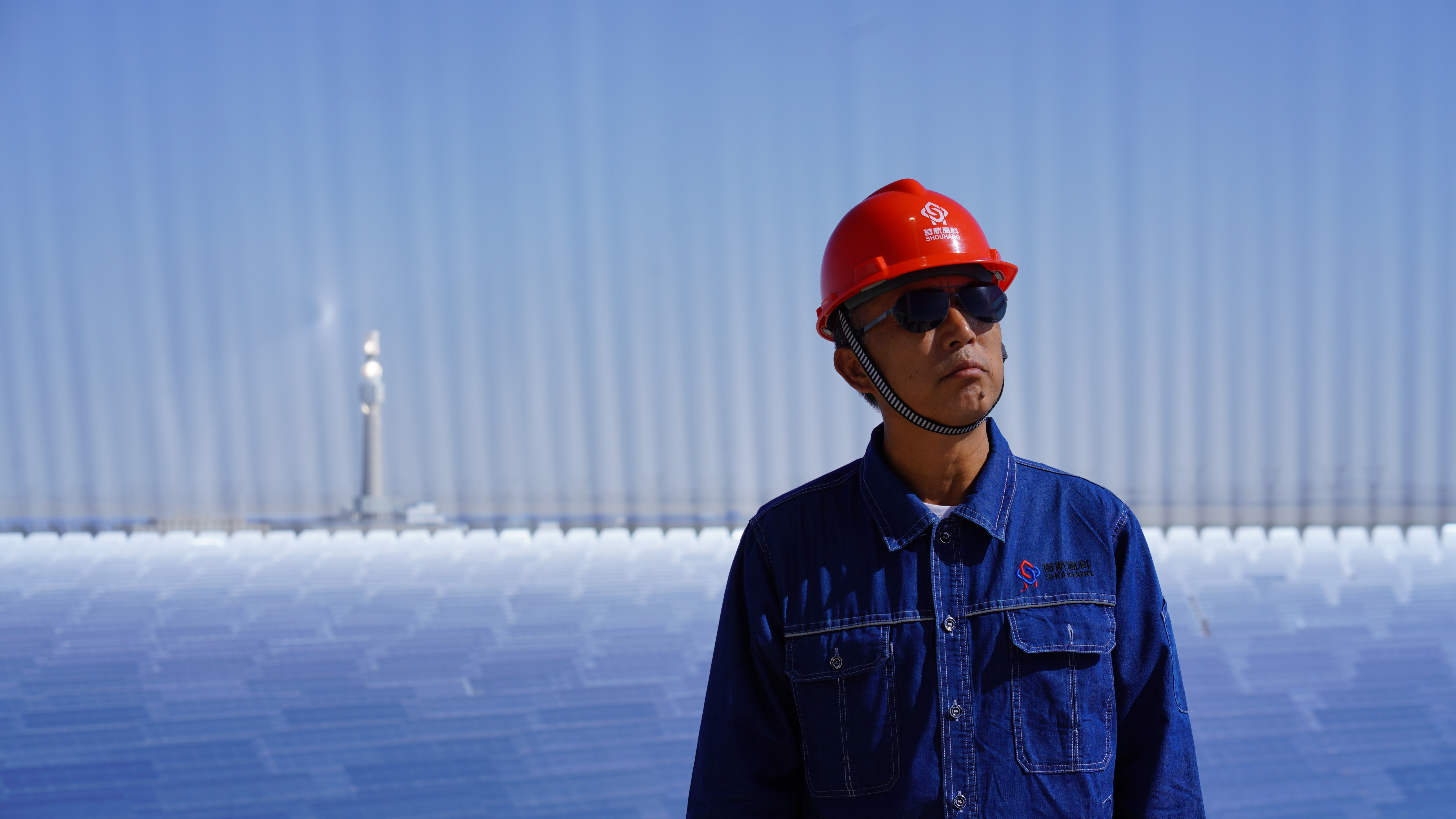
With arrays of heliostats as background, Liu Fuguo stands at the top of a 10-story building in a solar thermal power station, Dunhuang, northwest China's Gansu Province, September 9, 2023. Liang Si/CGTN
With arrays of heliostats as background, Liu Fuguo stands at the top of a 10-story building in a solar thermal power station, Dunhuang, northwest China's Gansu Province, September 9, 2023. Liang Si/CGTN
Every time Liu Fuguo takes people on a tour of his company's power station in the Gobi Desert, he hears a lot of "wows".
"Their reaction is the same as when I first came here," said Liu, who works as the general manager of Dunhuang Shouhang Resources Saving New Energy, an enterprise engaged in technology of concentrating solar power and energy conservation.
When he arrived as a tourist in 2018, Liu was also amazed by the science-fiction world in front of him. Having worked in the thermal power industry for 30 years, Liu chose to work in this solar thermal power station in Dunhuang, northwest China's Gansu Province, that same year.
Looking from the top of a 10-story building in the power station, visitors can see tens of thousands of beams of sunlight converging from the computer-controlled mirrors, known as heliostats, toward the 260-meter-high tower in the center. Around the tower, nearly 12,000 heliostats are arranged in concentric circles, tracing the sun like sunflowers.

An aerial view of a solar thermal power station in Dunhuang, northwest China's Gansu Province, September 9, 2023. Qu Bo/CGTN
An aerial view of a solar thermal power station in Dunhuang, northwest China's Gansu Province, September 9, 2023. Qu Bo/CGTN
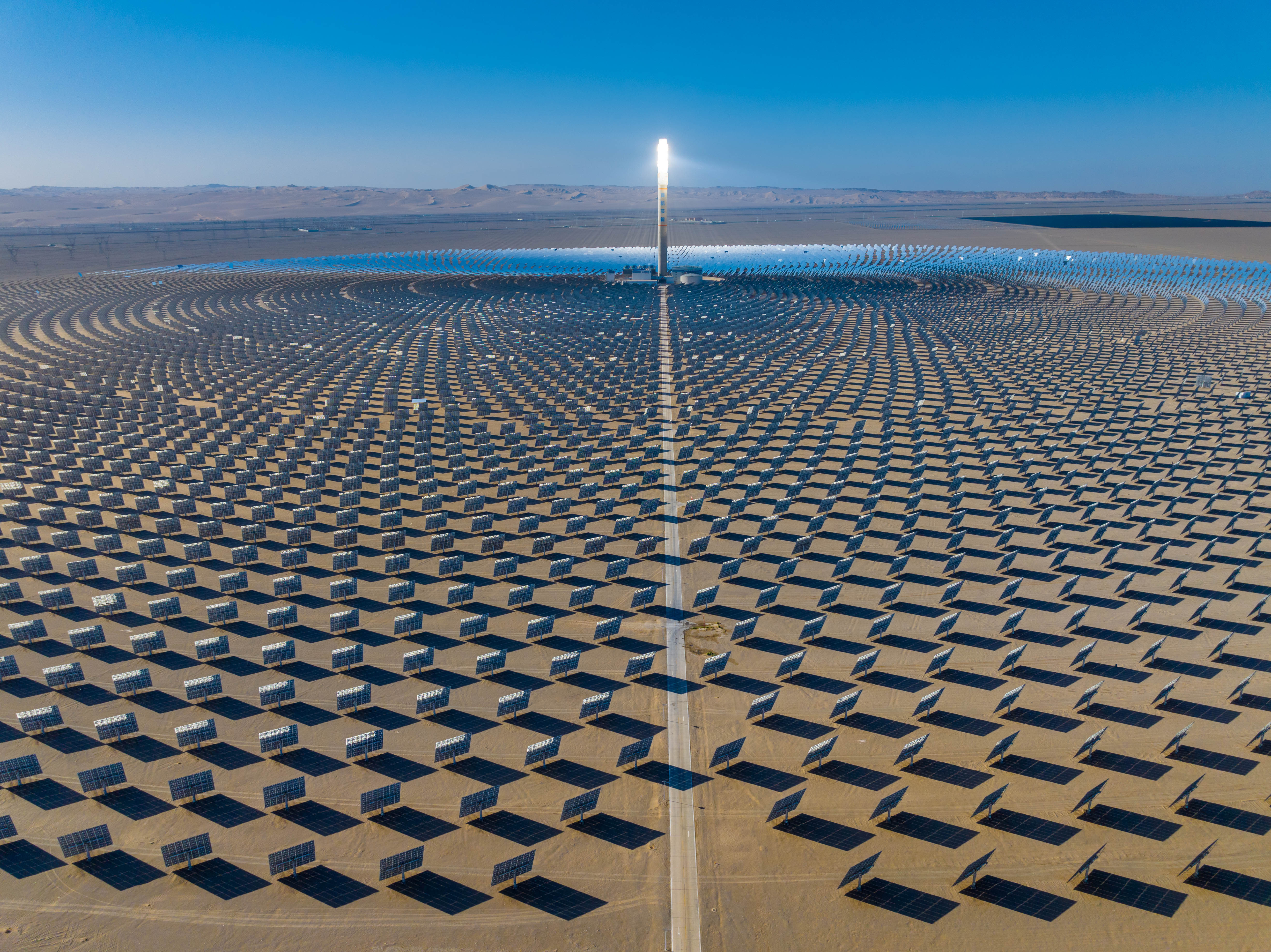
An aerial view of a solar thermal power station in Dunhuang, northwest China's Gansu Province, September 9, 2023. Qu Bo/CGTN
An aerial view of a solar thermal power station in Dunhuang, northwest China's Gansu Province, September 9, 2023. Qu Bo/CGTN
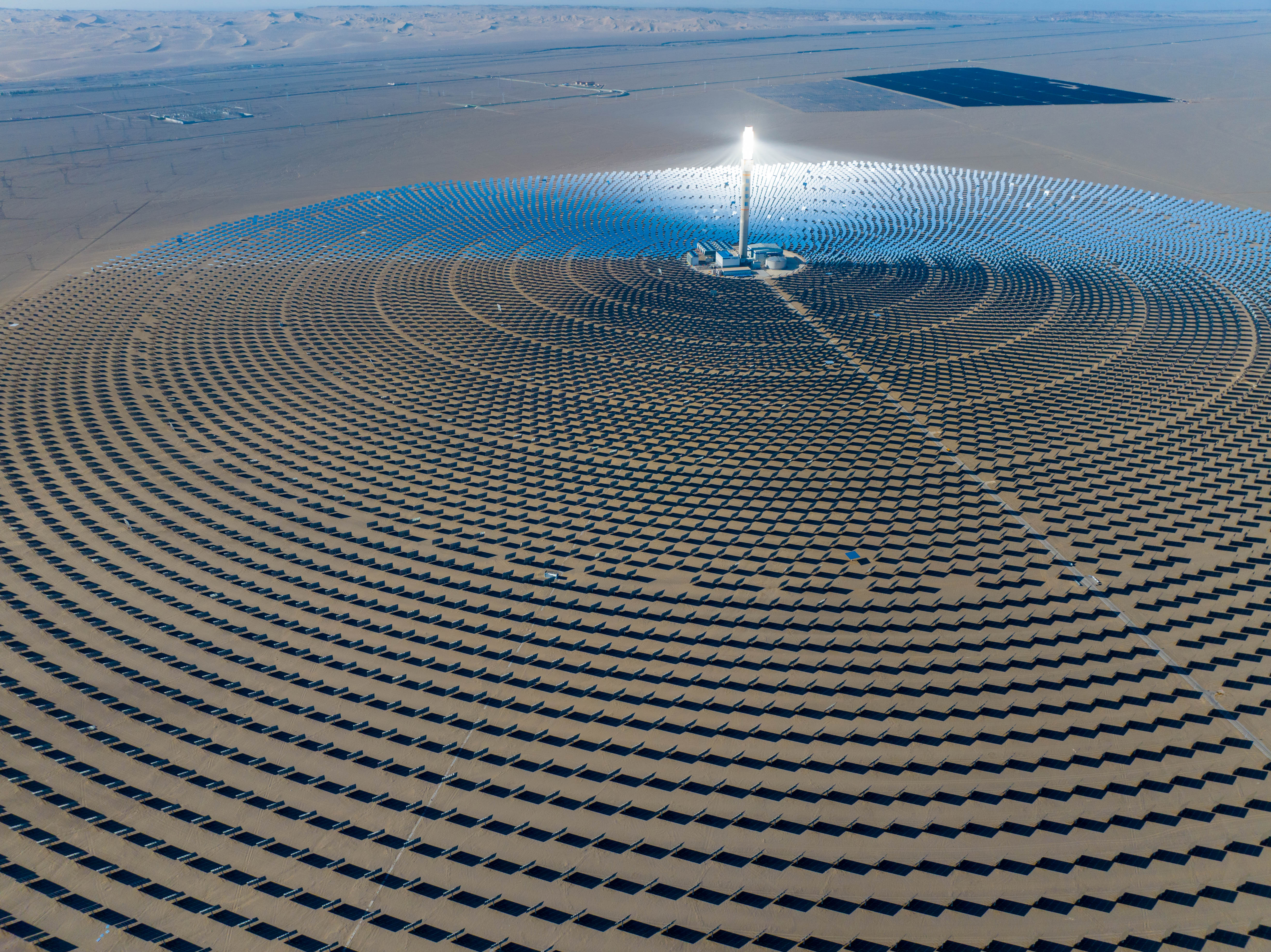
An aerial view of a solar thermal power station in Dunhuang, northwest China's Gansu Province, September 9, 2023. Qu Bo/CGTN
An aerial view of a solar thermal power station in Dunhuang, northwest China's Gansu Province, September 9, 2023. Qu Bo/CGTN
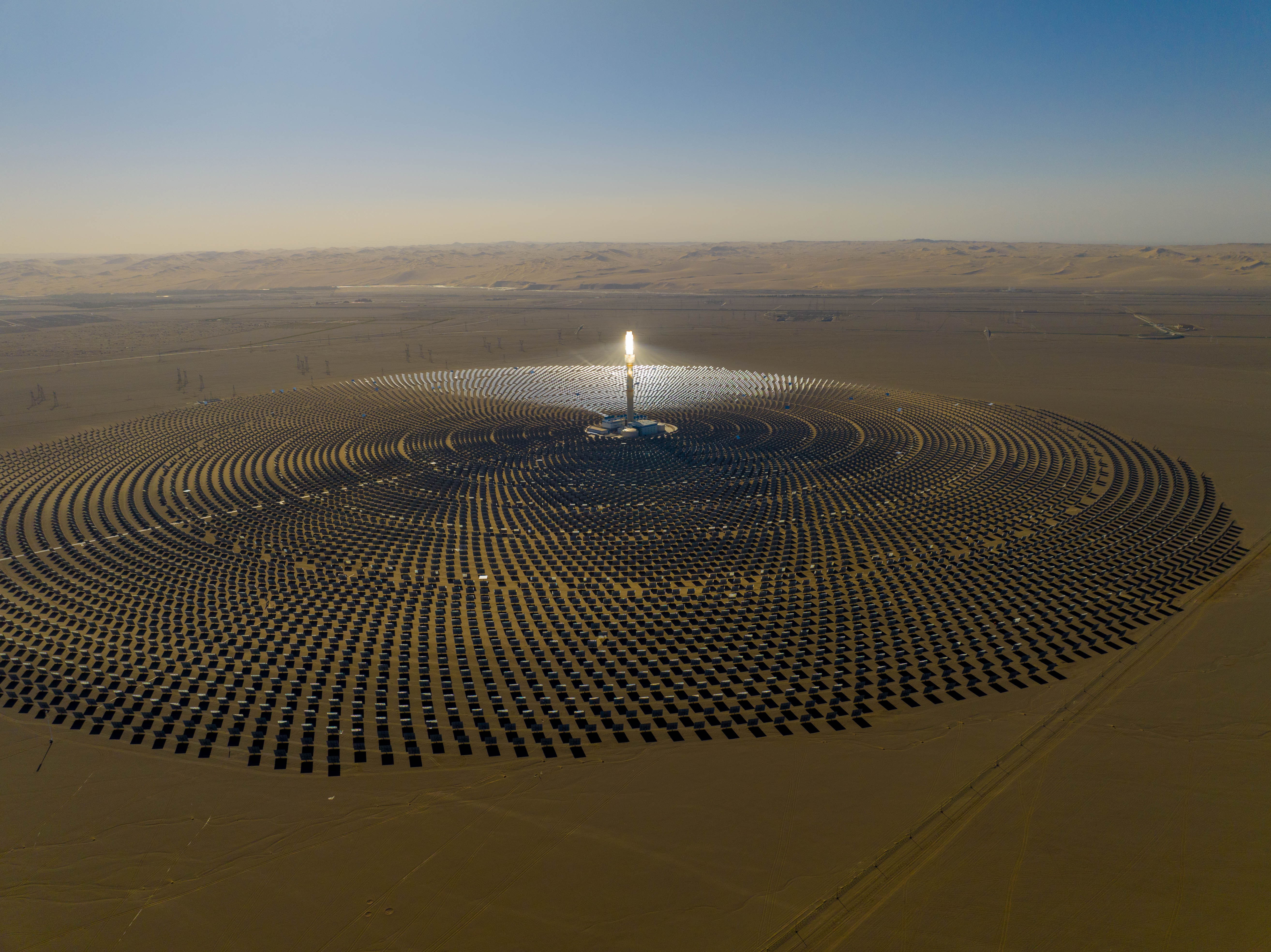
An aerial view of a solar thermal power station in Dunhuang, northwest China's Gansu Province, September 9, 2023. Qu Bo/CGTN
An aerial view of a solar thermal power station in Dunhuang, northwest China's Gansu Province, September 9, 2023. Qu Bo/CGTN
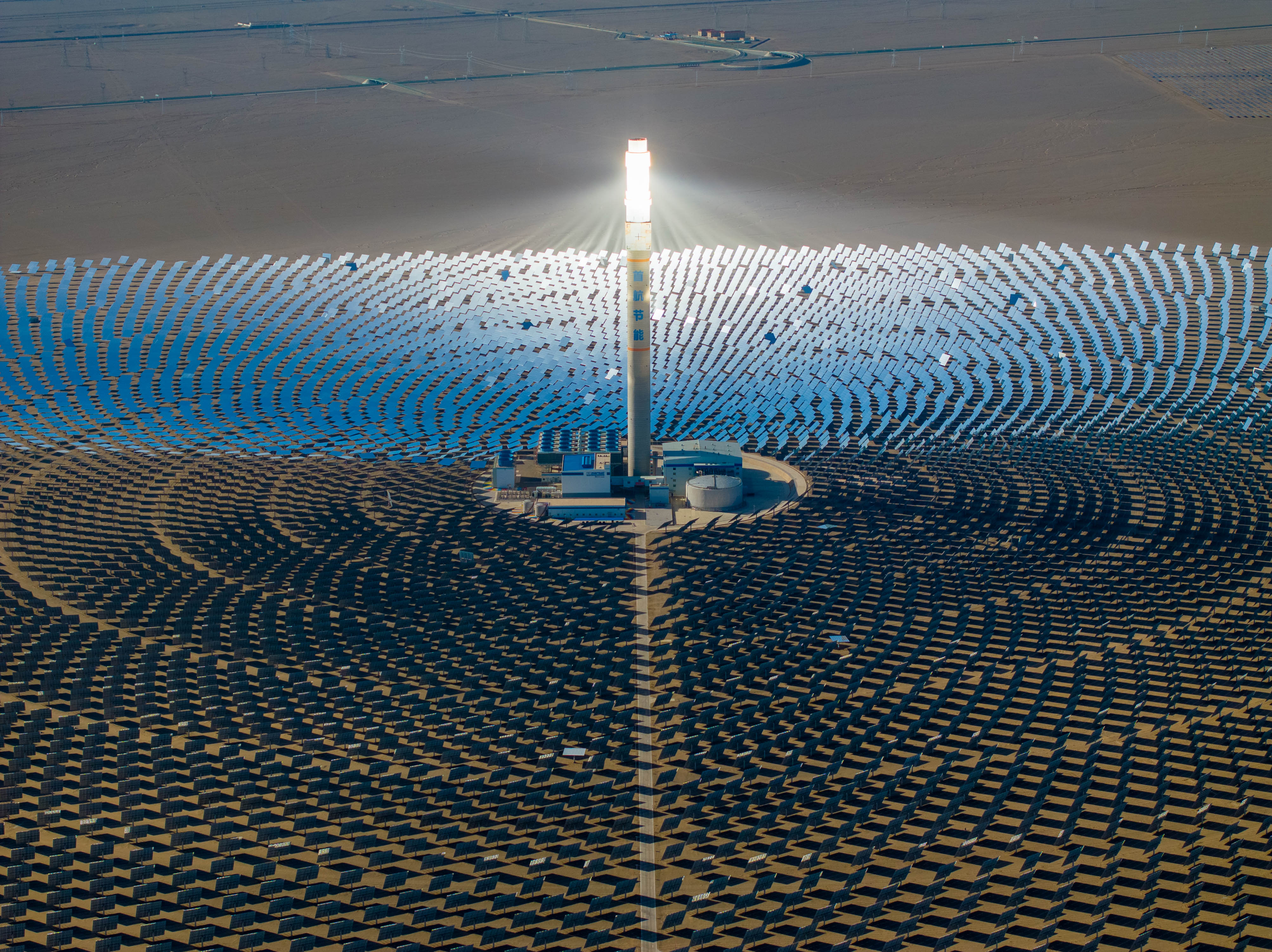
An aerial view of a solar thermal power station in Dunhuang, northwest China's Gansu Province, September 9, 2023. Qu Bo/CGTN
An aerial view of a solar thermal power station in Dunhuang, northwest China's Gansu Province, September 9, 2023. Qu Bo/CGTN
Dunhuang was chosen to be the home of this large-scale solar thermal power station because of its abundant sunlight resources. Meanwhile, the city's booming tourism industry also brought new ideas for the station's development.
Judging that tourists might be interested in coming to see the spectacular view, the company plans to launch some tourism projects. In the beginning, they raised fish in large ponds and wanted to attract tourists who like to fish. But to their surprise, birds come first.
"These mirrors reflect blue light, which look like a lake from the sky, so some migratory birds come to have a rest. Luckily, they found the ponds where we keep the fish. At first, only a few birds rested here, but in the past two years, more birds came to stop here in July and August," said Liu.
The company welcomes the arrival of birds despite the fact that they eat the fish in the ponds. In addition to fishing, the company also plans to set up a camping area where visitors can enjoy the starry sky because it is far away from the urban area.
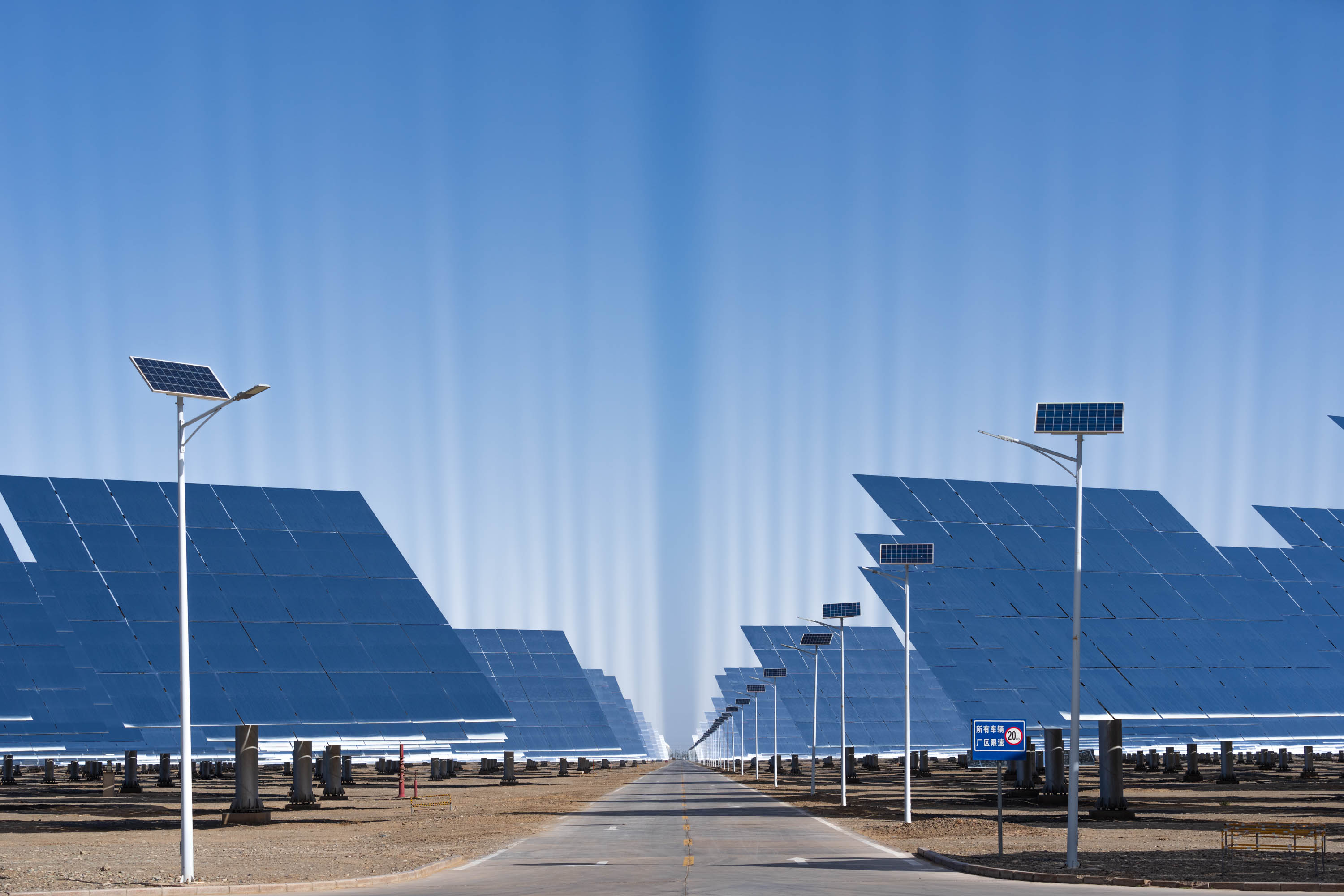
Heliostats of a solar thermal power station in Dunhuang, northwest China's Gansu Province, September 9, 2023. Qu Bo/CGTN
Heliostats of a solar thermal power station in Dunhuang, northwest China's Gansu Province, September 9, 2023. Qu Bo/CGTN
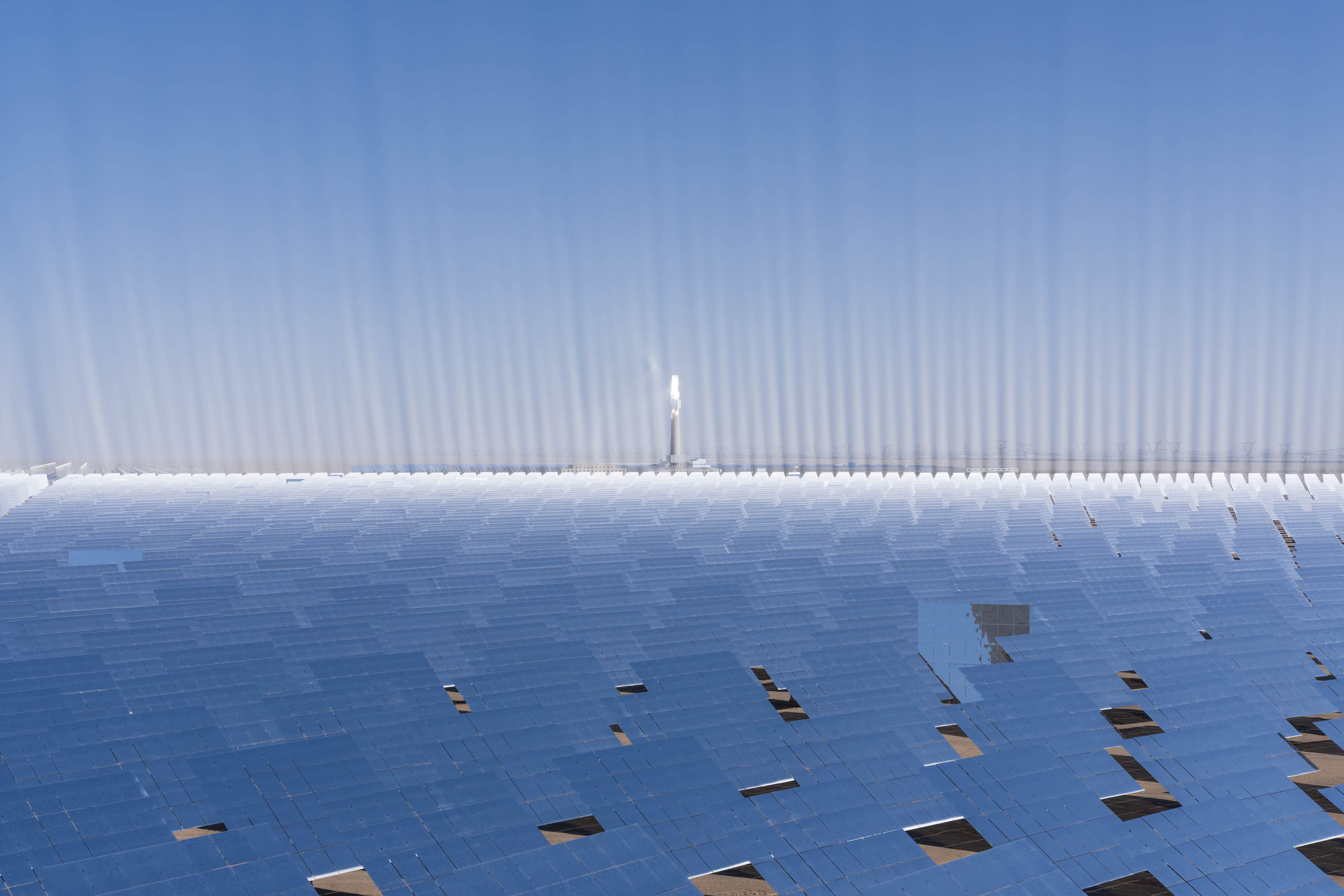
Heliostats of a solar thermal power station in Dunhuang, northwest China's Gansu Province, September 9, 2023. Qu Bo/CGTN
Heliostats of a solar thermal power station in Dunhuang, northwest China's Gansu Province, September 9, 2023. Qu Bo/CGTN
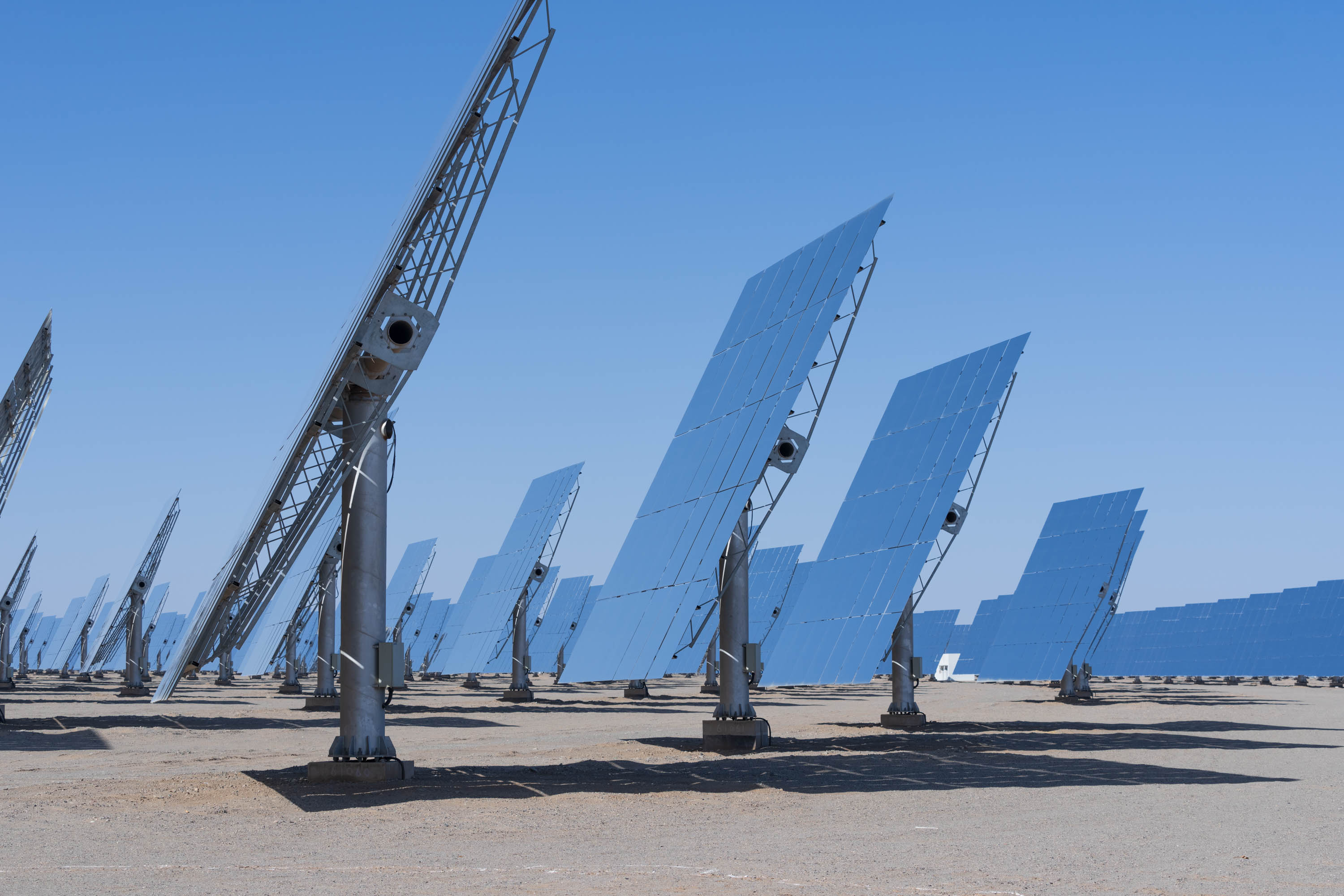
Heliostats of a solar thermal power station in Dunhuang, northwest China's Gansu Province, September 9, 2023. Qu Bo/CGTN
Heliostats of a solar thermal power station in Dunhuang, northwest China's Gansu Province, September 9, 2023. Qu Bo/CGTN
Shining up high, the heat absorber of the tower accumulates energy to heat up molten salt flowing inside. The molten salt then generates high-temperature and high-pressure steam, which drives a turbine to generate electricity.
Using tons of molten salt, solar thermal power stations can store heat so as to guarantee continuous and stable output, overcoming the bottleneck of photovoltaic power generation which is weather-dependent.
Each heliostat is made up of 35 smaller mirrors which do not feel heat although they are scorched under the sun. To remove dust from the windy weather, these mirrors are cleaned every day to improve the efficiency of reflecting sunlight.
"It feels cool to stand in the shade of the heliostats," said Liu. "There's a temperature difference of about 10 degrees centigrade between shaded and non-shaded places."
Located at about 20 kilometers west of the city of Dunhuang, the 100 megawatt molten salt tower solar thermal power station is the largest one built in China. It is estimated that the station is able to reduce carbon dioxide emissions by 350,000 tons per year, equivalent to afforesting some 660 hectares of land.
China has vowed to peak carbon dioxide emissions by 2030 and achieve carbon neutrality by 2060. Industry insiders believe that development of solar thermal power generation technologies could help the country achieve these goals.
Liu said that due to equipment maintenance, the power station is now able to produce 1.5 million kilowatt-hours of electricity per day, which is about 60 percent of its full capacity.
"After the maintenance is completed by the end of the year, it will be able to produce about 2.2 million KWh of electricity a day," Liu said.
When asked if the power station would reduce electricity costs for local residents, Liu shook his head. "At present, construction of a solar thermal power station is still costly, but its advantage lies in the benefits of environmental protection," said Liu.
Liu believes that, with the maturity of the entire industrial chain, the construction cost will get lower in the future. He is 59 years old, but he has no plans to retire until he sees a boom in the field of solar thermal power generation.